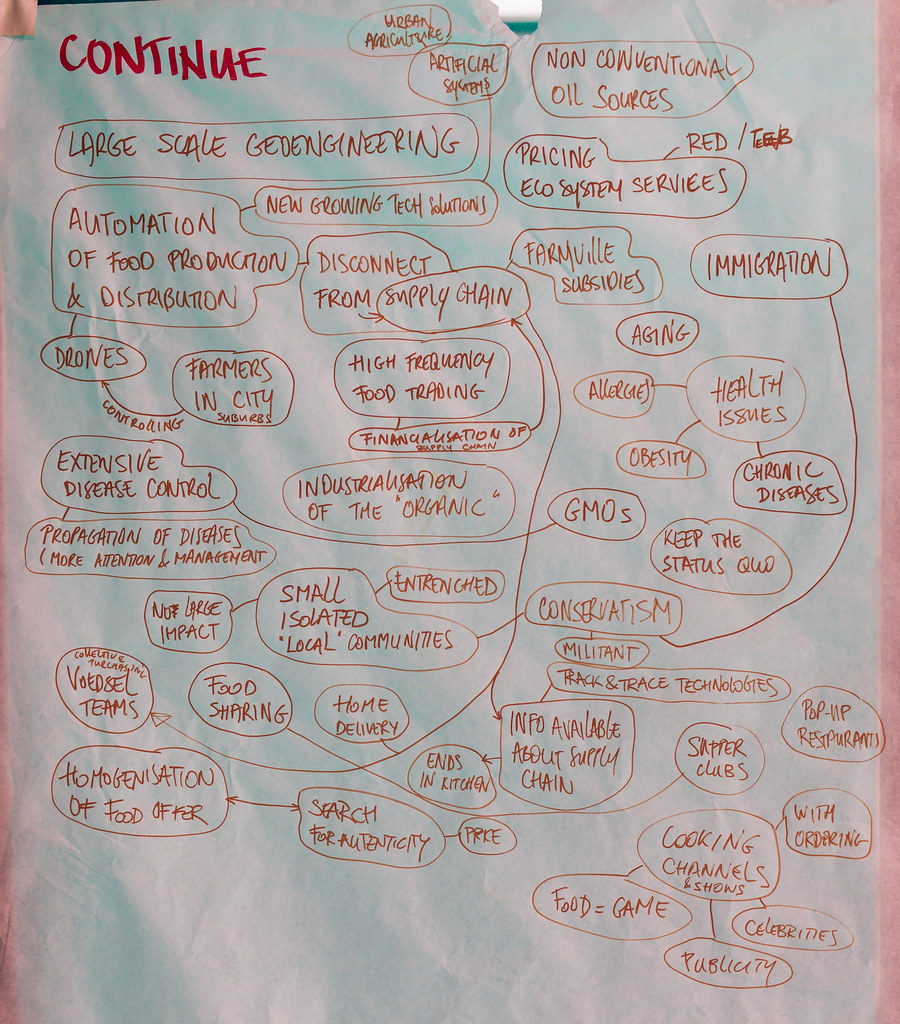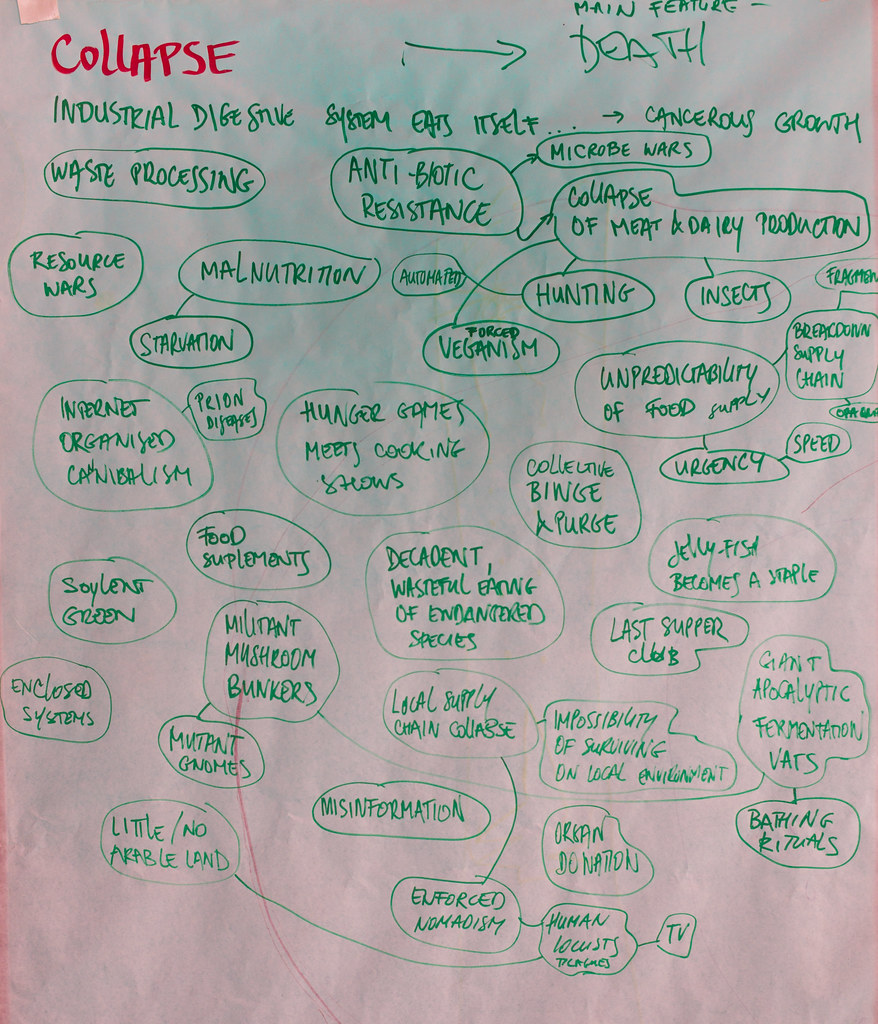This is an old revision of the document!
Food Scenarios
'Four Generic Futures' from food futures scenarios…
Continue
The myth of anthropocentrism is alive and well in the majority of the population. Climate change that effects productive food environments are mitigated through large scale geo-engineering. Oil is still the dominant fuel, coming from non-conventional sources. Pricing of eco-system services (such as RED or TEEB) thrives. Food production and distribution are largely automatised. Food is grown, monitored and transported through artificial systems within and in between large cities. This lead to an increased disconnect from the supply chain, that is driven by its financialisation and high-frequency trading (farmville subsidies…). Through advanced tracking and tracing technologies, supply chain information is relatively available and transparent (for those who make an effort and know where to look). With a proliferation of home delivery and disposal services, the supply chain extends into the kitchen. Although there seems to be much choice, the majority of food on offer is rather homogeneous, which prompts food conscious consumers to search for more authenticity in their diet, that comes at a price. For the majority of the population, food is more about quantity than quality, functional entertainment rather than wholesome nourishment. Cooking shows are the order of the day, where cooking competitions and celebrity chefs’ take-aways turn food preparation into an instantly gratifying game. The intensive agriculture, including creation and spread of GMOs has proven fragile to propagation of diseases (in animals, plants and humans), hence extensive disease (propagation) controls are in place. In humans, chronic diet-related illnesses are rampant, from allergies to obesity, cancers and heart failures.
As a response to chemically enhanced monocultures, organic agriculture continues scaling up and industrialising, whereas urban agriculture is optimised using technological solutions. Urban dwellers enjoy the benefits of densely populated cities by using services such as collective purchasing of food, leftovers-sharing networks, a wide variety of supper-clubs and pop-up restaurants. On the other hand, pockets of communities focused on small, slow and local food chains continue to exist, but appear rather isolated and fragmented in their attempts to change the status quo. Their impact isn’t felt by people outside of the communities themselves. After decades of trying to connect to each other and the world at large (and failing in most cases to scale up or in other ways create a larger impact), these communities become increasingly entrenched, risk averse, xenophobic and even (militantly) conservative.

Collapse
The myth of unlimited growth has become cancerous. The industrial expansion devoured everything it could and is now beginning to digest itself. Antibiotic resistance is one of the major threats to this fear-driven society. One of the first effects was the collapse of meat and dairy production, that eventually led to a series of brutal resource and microbe wars, malnutrition and in many cases even starvation. The (literal) hunt for animal protein is widespread. Animals previously considered non-edible have become sought after delicacies. While most people’s diet is forced veganism, there is an increase of insectivores and invasivores. Jelly-fish has become a staple in coastal regions.
The unpredictability, fragmentation, opacity and breakdown of the food supply chains increases a sense of urgency. The synthetic food supplements is a hugely profitable industry. This is a culture of feast and famine, balancing between certain death and decadent debauchery. Masses are entertained in collective Binge & Purge parties, while the select foodie elites indulge in decadent, wasteful eating of endangered species. On TV, the new hype is a reality TV where Hunger Games meets Master Chef. On the internet, cannibalism is organised through social networks, with an alarming rise in prion diseases. The internet is a cesspit of misinformation and greenwashing campaigns.
As the short supply chains become unsustainable due to soil degradation and extreme weather, it becomes impossible to survive exclusively on a local environment. There is little or no arable land left, that gives raise to enforced nomadims, aka plagues of human locusts (that are of course televised). The militant transition towns have moved underground, cultivating mushrooms and guarding giant apocalyptic fermentation vats (the only non-contaminated food available for vast majority of population). Bathing in digestive enzymes attempts to replace antibiotic protection, giving rise to funky rituals.
A suicide cult of The Last Supper Club (with optional organ donation to Michelin star restaurants) gains popularity in major metropolitan areas. Most of humanity is sinking into a toxic “soylent green” marsh, while the select minority meets their death through consumption of exclusively poisonous last specimens of a species. Wherever you turn, there is death and decay, with no hope of redemption.

Discipline

